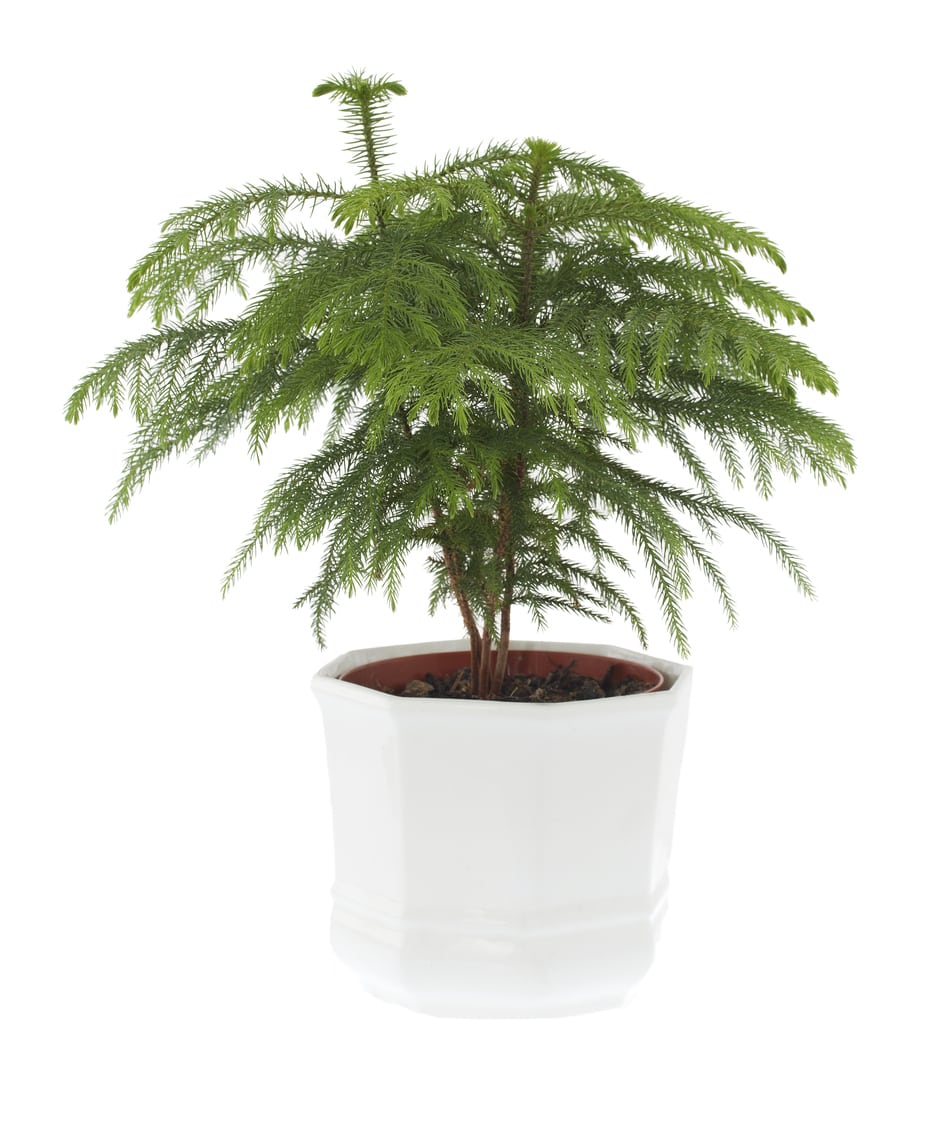Propagating Norfolk Pines: How To Propagate Norfolk Pine Trees


Norfolk Island pines (Araucaria heterophylla) are graceful, ferny, evergreen trees. Their beautiful symmetrical growth habit and tolerance of indoor environments make them popular indoor plants. In warm climates they also thrive outdoors. Propagating Norfolk pines from seeds is definitely the way to go. Read on for information on how to propagate Norfolk Pine trees.
Propagating Norfolk Pines
Norfolk Island pine plants look a bit like pine trees, hence the name, but they aren’t even in the same family. They do come from Norfolk Island, however, in the South Seas, where they mature into straight, stately trees up to 200 feet (60 m.) tall. Norfolk Island pine trees are not very cold tolerant. They only thrive in USDA plant hardiness zones 10 and 11. In the rest of the country, people bring them indoors as potted plants, often used as living non-traditional Christmas trees. If you have one Norfolk pine, can you grow more? That’s what Norfolk pine propagation is all about.
Norfolk Pine Propagation
In the wild, Norfolk Island pine plants grow from seeds found in their cone-like seed pods. That is far and away the best way to undertake Norfolk pine propagation. Although it is possible to root cuttings, the resulting trees lack the branch symmetry that make Norfolk pines so attractive. How to propagate Norfolk Island pines from seed? Propagating Norfolk pines at home starts with collecting the seeds when they mature in late summer or early autumn. You’ll need to break apart the tree’s spherical cone after they fall. Harvest the small seeds and plant them quickly to maximize viability. If you live in USDA zones 10 or 11, plant the seeds outside in a shady area. Propagating Norfolk pines also works in a container. Use a pot at least 12 inches (31 cm.) deep, placed on a shaded windowsill. Use an equal mix of loam, sand, and peat. Press the pointed end of a seed into the soil at a 45 degree angle. Its rounded end should be visible on top of the soil. Keep the soil damp. Most of the seeds spout within 12 days after planting, although some can take up to six months, so patience is a virtue.
Sign up for the Gardening Know How newsletter today and receive a free copy of our e-book "How to Grow Delicious Tomatoes".

Teo Spengler is a master gardener and a docent at the San Francisco Botanical Garden, where she hosts public tours. She has studied horticulture and written about nature, trees, plants, and gardening for more than two decades, following a career as an attorney and legal writer. Her extended family includes some 30 houseplants and hundreds of outdoor plants, including 250 trees, which are her main passion. Spengler currently splits her life between San Francisco and the French Basque Country, though she was raised in Alaska, giving her experience of gardening in a range of climates.